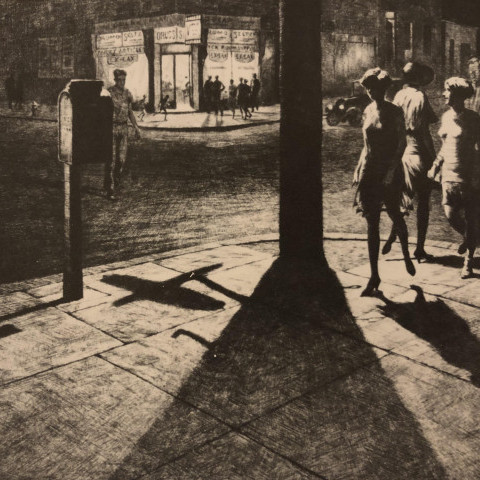Born in Castlemaine, Australia, Martin Lewis became in the 1920s and 1930s one of the major print makers in the United States, completing between 1915 and 1945 about 143 prints. On canvas, he also explored human activity and relationships, but his graphics are regarded as superior to his paintings. He lived in New York City most of his life, with the exception of several years during the Depression when he moved to Connecticut. But in 1933, missing the city, he returned to New York.
He trained in Sydney, and emigrated to the United States in 1900. After a trip in 1910 to San Francisco, he decided to settle in New York where he was excited about the rhythms of city life. In 1915, largely self taught, he made his first etching and also pursued drypoint. From 1920 to 1922, he lived in Japan, and that experience influenced his work. In 1934, he and lithographer George Miller organized a printmaking school in New York, and Lewis taught at the Art Students League* from 1944 to 1951.
Images of New York City fill his prints that show industry, commerce, and immigrant life. Like artist Edward Hoppper, Lewis especially liked night scenes, which offered him the chance to show light and shadow. He continued scenes from his print studies of moody urban streets and structures with and without dominating figures. In October, 1998, his Cityscapes on Paper was shown at the Brooklyn Museum.
Sources:
Matthew Baigell, Dictionary of American Art
Spanierman Galleries, Art for the New Collector II

